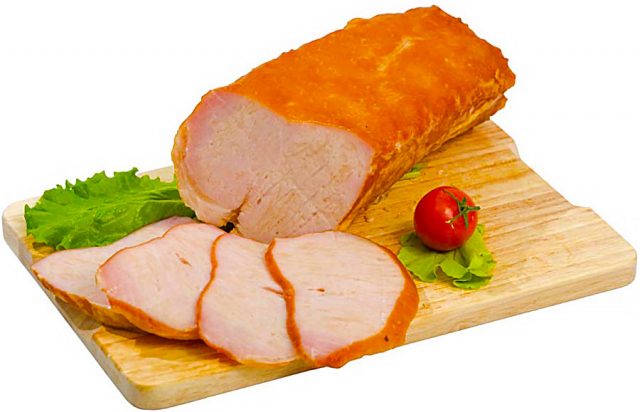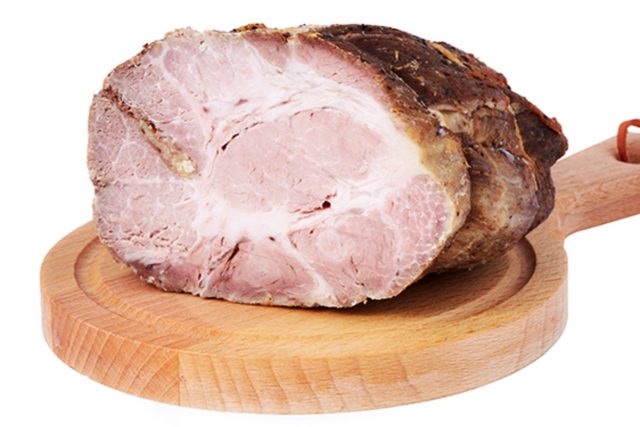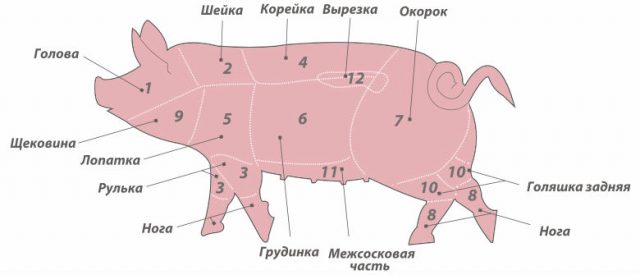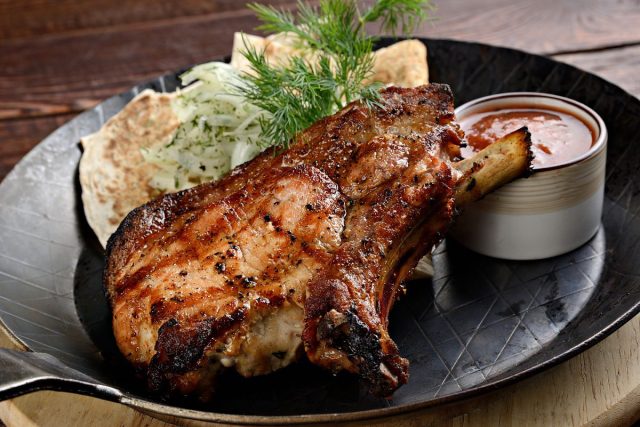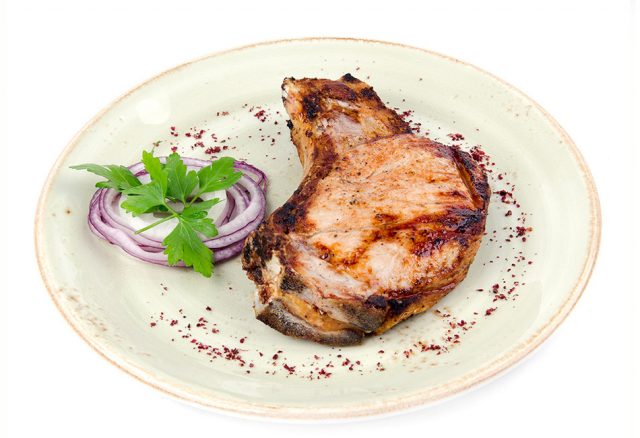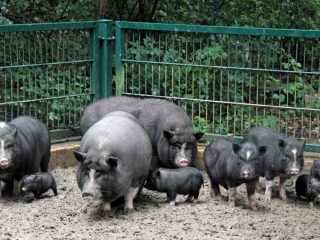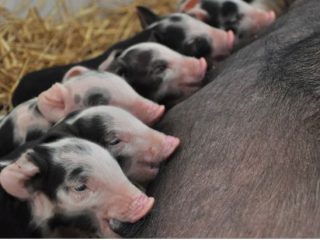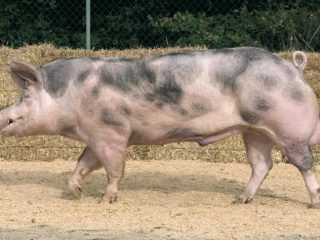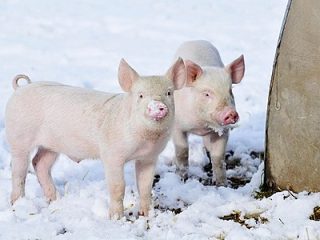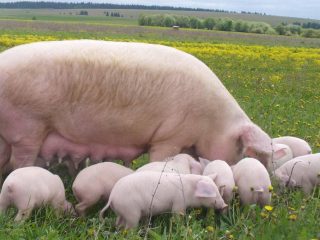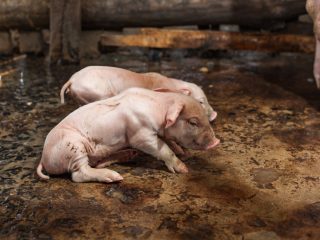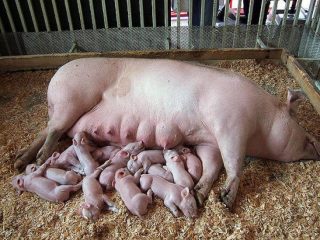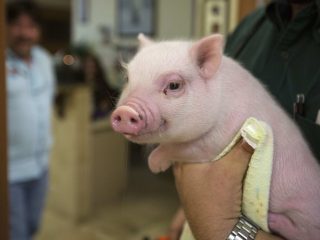Content
Pork loin is a product for everyone. Although not everyone accepts pork due to the level of fat content of this type of meat, no one disputes the softness and juiciness of the loin.
Distinctive features
The pig is cut into 12 types of meat. Each part has distinctive features. Thus, brisket is known for its fat content, pork tenderloin for the absence of unnecessary impurities and increased softness. The loin, as a part of the pig, differs from other parts of the carcass in the following features:
- softness - pork loin, carbonate is softer and juicier after cooking even without beating, but harder than tenderloin;
- the fat content of the carbonate is higher than that of a pork knuckle, ham, or tenderloin, but there is less fat than in pork belly, rump, and chuck;
- the presence of bones - the classic pork loin contains bone - so it is easy to check the authenticity.
A characteristic feature of the pork loin is its aroma. Meat of this type is more palatable and easier to prepare due to the lack of odor inherent in adult boars and adult pigs.
Other features lie in the composition.The nutritional value and beneficial substances are not unique, but make pork a necessary product. You can replace the loin in your diet with several dishes, vitamins, and nutritional supplements. However, taste replacement is not possible.
Composition and value of meat
Eating loin (carb) is beneficial. This meat is lean and easily digestible. They especially appreciate the absence of excess fat and films. The piece is easy to remove from the bone. Pork is valued in cooking due to the absence of the need to process the product for a long time.
Nutritional value per 100 g of meat:
- protein – 13.7 g;
- carbohydrates – 0 g;
- fats – 36.5 g;
- kilocalories – 384 kcal.
Carbonate as a part of pork carcass is also valuable due to its composition. Beneficial properties depend on the richness of chemical components. Pork loin contains:
- B vitamins;
- vitamin E;
- vitamin H;
- vitamin PP;
- chlorine;
- magnesium;
- phosphorus;
- potassium;
- sulfur;
- sodium;
- calcium;
- zinc;
- iron;
- copper;
- chromium;
- iodine;
- fluorine;
- cobalt;
- manganese;
- nickel;
- molybdenum;
- tin.
Part of a pig carcass is a healthy product, but the loin cannot be called dietary. The fat content is too high for those losing weight. The main value is the richness of vitamins, microelements, macroelements, and easy digestibility of protein. Vitamins have a positive effect on:
- digestion;
- metabolism;
- immunity;
- hematopoiesis (B5 deficiency leads to impaired hemoglobin formation);
- skin (lack of PP causes skin problems).
A lack of phosphorus can cause the development of anemia, anorexia, and rickets (therefore, it is important for vegetarians to take nutritional supplements). Zinc is good for the liver and sexual function. During pregnancy, deficiency of the element leads to developmental disorders of the fetus.
Where is the loin of a pig located?
See where the loin is located on a pig's carcass, mono on any diagram, a photo will help with this. The location of this type of meat is the pork loin, between the neck and the ham. Cut out the part along with the ribs. As a result, pork “ribs”, carbonate, and loin are often confused. The latter is cut closer to the spine.
Pork loin always has a bone; the meat is identified precisely by this feature. Otherwise, you will likely end up with pork tenderloin, part of the ham, or other areas. Buying a packaged product is risky - you may end up with meat of poor quality. Market meat is selected precisely - some manage to find a seller with an uncut carcass and ask for the desired piece.
What part of the pork carcass is carbonate?
The carbonate is located where the pig's loin is located, but the word "carbonate" is missing from the photo. There are several reasons:
- the correct name is “carbonate”, “carbonate” is a colloquial form, in fact this word means a chemical compound;
- this type of pork meat is a loin that has been cleared of bones and fat, in other words, a high-quality processed part of the carcass;
- Carbonade is often called ready-made smoked meats.
The composition, calorie content, and taste of pork chop and loin differ slightly. Carbonate should not contain fat, therefore, the meat is less caloric and contains slightly fewer microelements. The differences in taste are noticeable only to rare gourmets. Cooked loin and carbonate differ only if they are different dishes.
How to choose and store loin and carbonate correctly
Knowing how to select and store meat correctly is an important skill. A low-quality piece will make the dish not good enough; too long storage without violations will lead to spoilage of the product.
- The smell of raw meat should not have any unpleasant notes. An adult pig smells just like meat, a piglet smells a little like milk. A boar will give off an unpleasant “aroma” when cooked; you can only test a boar or pig at the market - heat a needle over a lighter and pierce the loin. If there is a specific smell, it is not recommended to take it.
- The color is only uniform. Bruising and unevenness are a sign of product spoilage. The shade should be even pink or red. Dark shades indicate an older pig.
- No dyes - if you touch a piece with a paper napkin, there should be no stains or streaks left.
- Presence of bone – remains of ribs in the piece are preferred. The lack of bone makes it difficult to determine whether a person is carbonated or not.
- There should be little fat, always white. If it is yellow, this is a sign of old age of the pig. The piece will be hard, possibly stringy, and likely to have an unpleasant odor.
- Fresh meat regains its shape after pressing. If dents remain, the product is expired. The only option is to cook immediately, consume immediately. However, this is not recommended.
Pork meat should be stored in the freezer, patted dry with napkins and wrapped in foil. It is permissible to store unfrozen carbonate:
- smoked;
- baked;
- fried.
Without freezing, meat should be stored for no more than a month. When an expiration date is indicated on the package, it is important to respect it by not consuming carbonate after the specified date. Be sure to read the label before purchasing.
What can you cook from pork loin?
The loin is suitable for making:
- escalope;
- steak;
- chop;
- schnitzel;
- boiled pork;
- grill;
- roast with vegetables;
- minced meat;
- meat soup;
- kebab;
- smoked meats
Due to its softness, the loin does not need to be marinated for a long time (in vinegar, wine, fermented milk products, fruit juice); minimal beating is required. This pork goes well with:
- vegetables;
- legumes;
- dough (pie filling);
- rice, pasta.
Minced meat cutlets are softer, more tender, and require minimal additives. A prerequisite is the removal of bone and fat. Cooking the loin as part of a pig carcass has little difference from cooking carb.
What is prepared from carbonate?
There are few differences with the previous type. The difference is the absence of bone and fat. Carbonate is used for:
- baking;
- smoking;
- frying (chops, escalopes);
- boiled pork.
Among the recipes there are:
- honey baked carbonade;
- pork chop in wine;
- baked carbonade in foil;
- carbonade, fried and baked without foil.
Pork chop is also added to soups. Due to the absence of bones, the broth is less concentrated; pieces of meat need to be cut finely and fried with onions and carrots. Pork carbonate added at the end of cooking the soup gives a mild meaty taste. Carbonade is seasoned with garlic, spices, herbs, sour and sweet sauces.
Conclusion
The right pork loin is an addition to your everyday and holiday table. It is easier to prepare a tasty dish when the meat is well cut.
